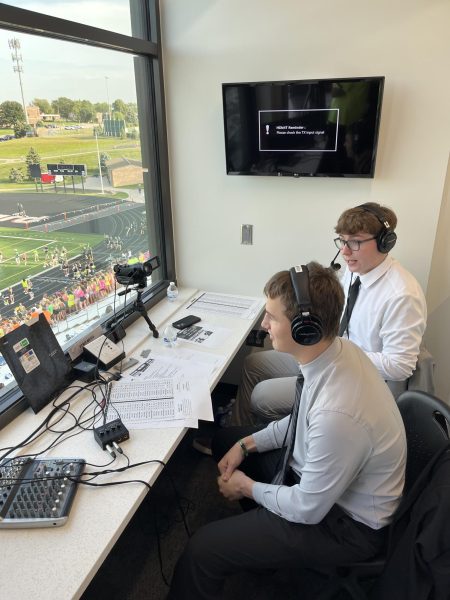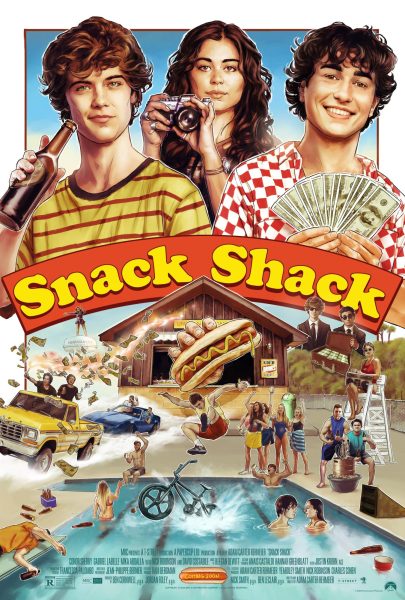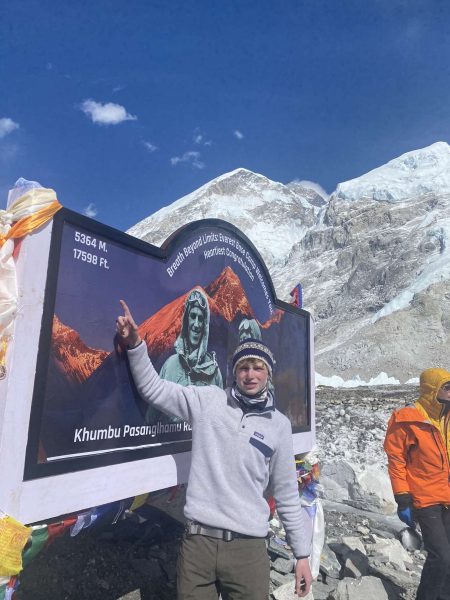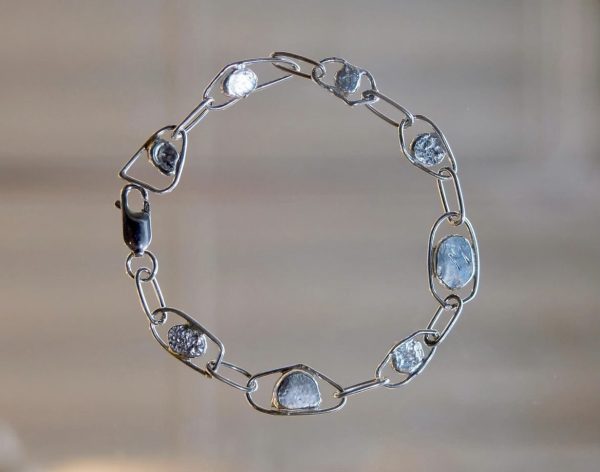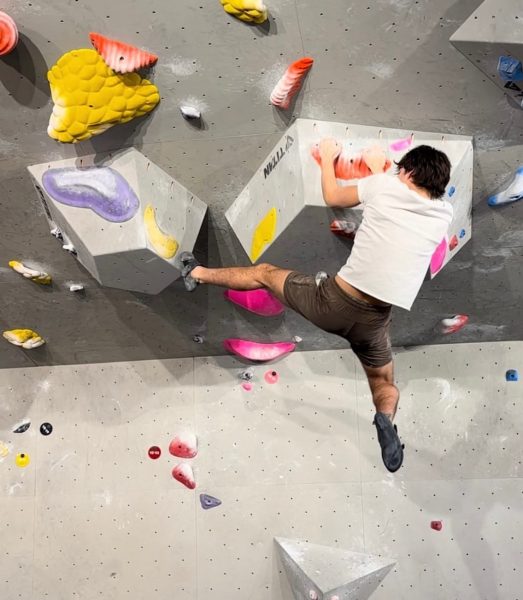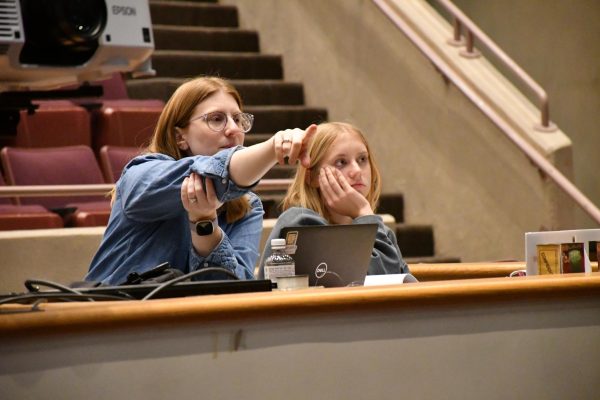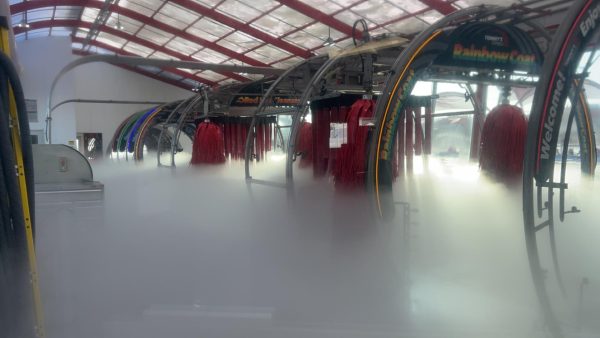Life of a Rodeo Cowboy
Not your average high school sport
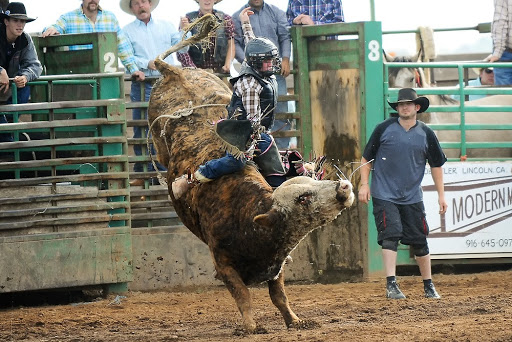
December 14, 2018
Sitting on the back of a bull, hand gripping a rope tied around the beast’s body, junior Byron Christensen gives a nod giving the signal to open the chute. The second that chute opens, he and the bull barrel out into the arena kicking and bucking the whole time. Christensen holds on tight, white knuckled, with one thing in mind: staying on for eight seconds.
Unlike most high school students, Christensen does not compete in your average sport. He is involved in rodeo; a sport made up of smaller events where cowboys compete for fun, a sense of pride, adrenalin and in some events cash prizes.
Christensen owes his interest in rodeo to his family. He is a fourth generation rodeo cowboy and has been involved in the sport since he was five years old.

“My great grandpa, grandpa and uncle all did rodeo growing up,” Christensen said. “I watched them compete and wanted to follow in their footsteps, so I started competing in it too and just fell in love with the sport.”
Christensen competes in bull riding, an event in which a rider attempts t
o remain mounted on a bull for eight seconds while the animal bucks violently trying to throw the rider off.
In bull riding the competitor can earn zero to 100 points. Half of those points come from the rider, while the other half come from the bull. The rider is scored on his technique of handling the bull, matching the bull’s movements and staying balanced. Riders can earn extra style points, usually gained by spurring the animal. The bull is scored on its overall agility, power and speed, back end kicks, front end landings and how much of a hard time it gives the rider.
“Bull riding is pretty nerve wracking because when that chute opens, the bull could throw you over,” Christensen. “During the actual ride all the nerves you feel before the chute are replaced by adrenaline and the thrill of the ride.”
To be successful in rodeo you need to prepare through warm ups and practice. To prepare for rodeo Christensen jumps and goes for short jogs to get the blood flowing; to warm up the body and wake up his senses. He also mentally prepares by thinking about the possibility of success or even failure most likely ending in injury.
“I think another thing that makes a rodeo cowboy successful is having the mindset that you are the best there is,” mentor Tyler Creed said. “If you don’t go into that arena thinking you are the best, you are not setting yourself up for success,
but failure.”
Christensen advises those looking to join rodeo to have grit, guts and a love for the sport. Like any sport, you need to work hard and be dedicated to get better.
“If you don’t give up and keep at it, you are a true rodeo cowboy,” Christensen said. “It is your dedication, hard work and willpower that makes you a rodeo cowboy, not your rides.”
According to Christensen there is a great sense of camaraderie in rodeo. Rodeo isn’t split up into bull riders or barrel racers, but they are a one big family. There is a brotherhood among the rodeo cowboys. In rodeo you are a family that is always there for each other.
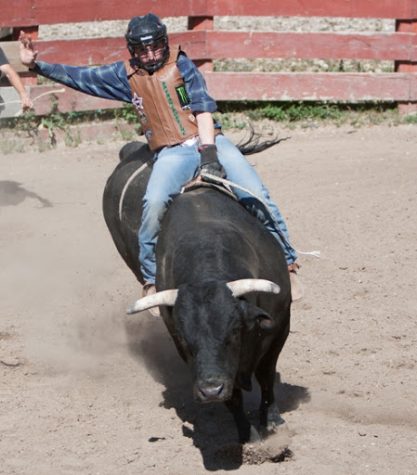
“One of my best memories from rodeo last year, was during my fifty-sixth ride,” Christensen said. “I rode in honor of an older cowboy who had passed away that year. We all took a knee and held our hats over our hearts in a moment of silence. It was in that moment I knew these people were my ride or die; my family.”
To Christensen rodeo is more than the spurs and buckles. It’s a family and a way of life.







